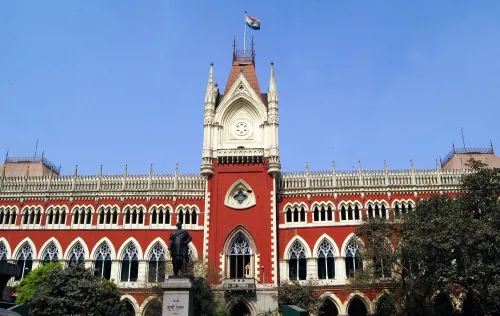Did the Karnataka Government Secure a Loan of Rs 37,000 crore More Than Last Year to Fund Guarantees?

Synopsis
Key Takeaways
- Karnataka's guarantee schemes accounted for 15% of revenue expenditure for 2023-24.
- The state borrowed Rs 37,000 crore more than last year.
- Revenue deficit reached Rs 9,271 crore.
- Capital expenditure fell by Rs 5,229 crore.
- Future projections indicate increasing revenue deficits.
Bengaluru, Aug 20 (NationPress) A report from the Comptroller and Auditor General (CAG) has indicated that the five guarantee programs initiated by the Karnataka government represented 15 percent of the Revenue Expenditure for the fiscal year 2023-24. The report further highlighted that to fund these guarantees, the state government took out a loan of Rs 37,000 crore more than in the previous year while also decreasing capital expenditure (Capex).
The central auditor's findings were presented in the Legislative Assembly on Tuesday, with further details released on Wednesday.
The CAG noted, "The implementation of these schemes led to a 12.54 percent increase in expenditure compared to last year, significantly contributing to a Revenue Deficit of Rs 9,271 crore. As a result, the state's fiscal deficit rose from Rs 46,623 crore in 2022-23 to Rs 65,522 crore in 2023-24."
In an effort to finance the guarantee schemes and the resulting deficits, the state secured net market borrowing amounting to Rs 63,000 crore, which is an increase of Rs 37,000 crore from last year's borrowings. Furthermore, the guarantee schemes led to a reduction in Capex for infrastructure projects by approximately Rs 5,229 crore compared to the previous year, according to the CAG.
The CAG report detailed five guarantee schemes active during 2023-24. A total budget of Rs 36,537.96 crore was allocated. Under the Gruha Laxmi program, which provides Rs 2,000 monthly to women heads of households, Rs 16,964 crore was utilized. The Gruha Jyothi free power initiative accounted for Rs 8,900 crore, the Anna Bhagya free rice program consumed Rs 7,344.68 crore, the Shakti free travel for women scheme cost Rs 3,200 crore, and the Yuva Nidhi scholarship program amounted to Rs 88.88 crore.
These guarantee schemes constituted 15 percent of the revenue expenditure for 2023-24. While the state's revenue increased by 1.86 percent from the previous year, its expenditure surged by 12.54 percent. This rise in expenditure was primarily due to the guarantee programs, leading to a reported Revenue Deficit of Rs 9,271 crore, as stated in the CAG report.
The report emphasized, "This imbalance between revenue and expenditure this year has resulted in a revenue deficit of Rs 9,271 crore, following a recovery in 2022-23 from the economic downturn caused by Covid-19."
The state's financial deficit also escalated from Rs 46,623 crore in 2022-23 to Rs 65,522 crore in 2023-24.
In order to cover the guarantees and associated deficits, the state engaged in net market borrowing of Rs 63,000 crore, which is Rs 37,000 crore more than last year's net borrowings. This increase is likely to escalate the repayment burden in the foreseeable future and significantly heighten the state's financial obligations, as warned by the CAG report.
The state has also decreased its Capex for infrastructure by roughly Rs 5,229 crore compared to last year. This reduction has contributed to a 68 percent rise in incomplete projects relative to the previous year. Such a contraction in gross capital formation may adversely affect future growth prospects, as highlighted by the CAG.
Thus, executing guarantee schemes without adjusting current subsidies or financial assistance could strain the state's resources and affect fiscal deficits and debt levels, as pointed out by the CAG report.
The government’s Medium Term Fiscal Plan for 2024-28 anticipates a revenue deficit of Rs 27,354 crore, along with increased borrowings projected at Rs 1,05 lakh crore, according to the CAG report.
The finance department of the state acknowledged these findings during an Exit Conference held in January 2025, stating that the five guarantees have stimulated the local economy, lessened economic disparities, and fostered human capital development.









